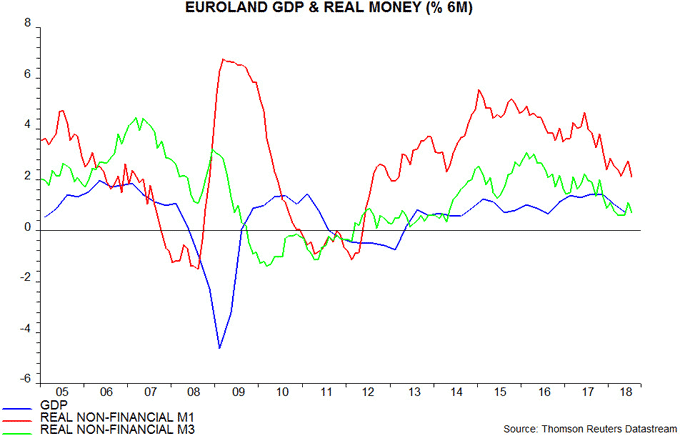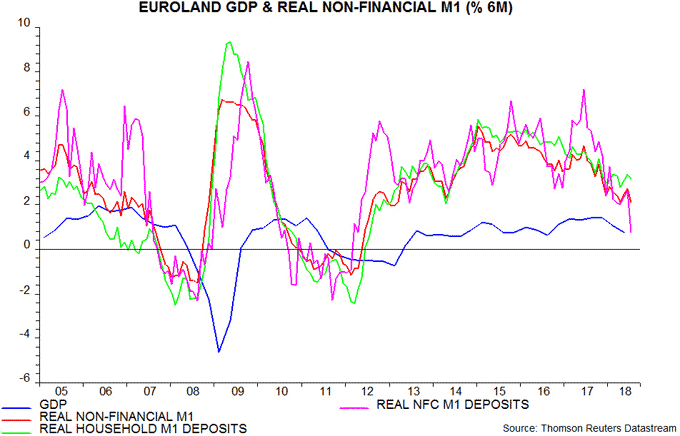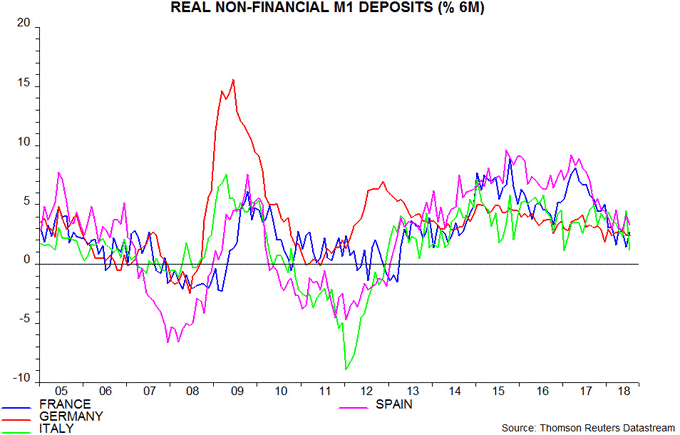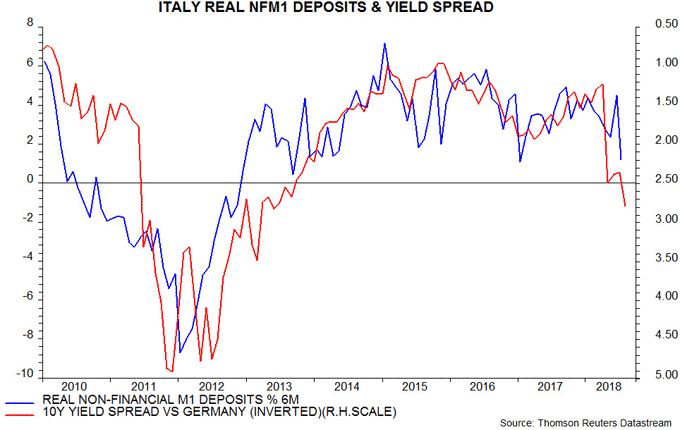
Janus Henderson: Euroland money trends - weakness continues
Euro area July money numbers were disappointing, suggesting that GDP growth will stick at its recent slower pace – contrary to consensus hopes that first-half weakening represented a temporary “soft patch”.
03.09.2018 | 13:50 Uhr
As usual, the focus here is on non-financial monetary aggregates, comprising holdings of households and non-financial corporations (NFCs)*. Six-month growth rates of real (i.e. inflation-adjusted) non-financial M1 and non-financial M3 fell in July and are back near lows reached in April and May respectively – see first chart.

Both real money growth measures declined significantly between June 2017 and April / May, correctly signalling the “surprise” weakening of GDP expansion in the first half of 2018. The sideways move since April / May suggests that economic growth will continue at around its recent pace through the first quarter of 2019 – GDP may rise at a 1.25-1.5% annualised rate, below ECB and consensus forecasts of 1.75-2.0%.
The fall in six-month real non-financial M1 growth in July reflected notably weaker expansion of non-financial corporate deposits – second chart. This may signal a scaling-back of business expansion plans in response to uncertainties around US trade policy, Brexit, the ending of QE and Italy / EU relations.
Curbed business expansion would be expected to feed back into consumer spending via reduced hiring and slower expansion of worker incomes. Corporate real M1 holdings display a stronger correlation with future GDP expansion than household holdings, according to ECB research.

The third chart shows six-month growth rates of real non-financial M1 deposits in the "big four” economies. The Euro area slowdown over the past year has been driven by France and Spain, suggesting a greater loss of economic momentum in those two countries – already evident in French GDP data for the first half.

Italian real deposit growth has been volatile but weakened sharply in July. Monetary trends led the Italian / German yield spread around the 2011-13 recession but have lagged the spread recently; with the latter widening further, the monetary slowdown may be sustained – fourth chart.

*The headline M1 / M3 aggregates also include financial sector money holdings, which are more volatile and display a lower correlation with future GDP expansion, according to ECB research.




Diesen Beitrag teilen: